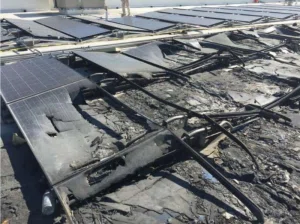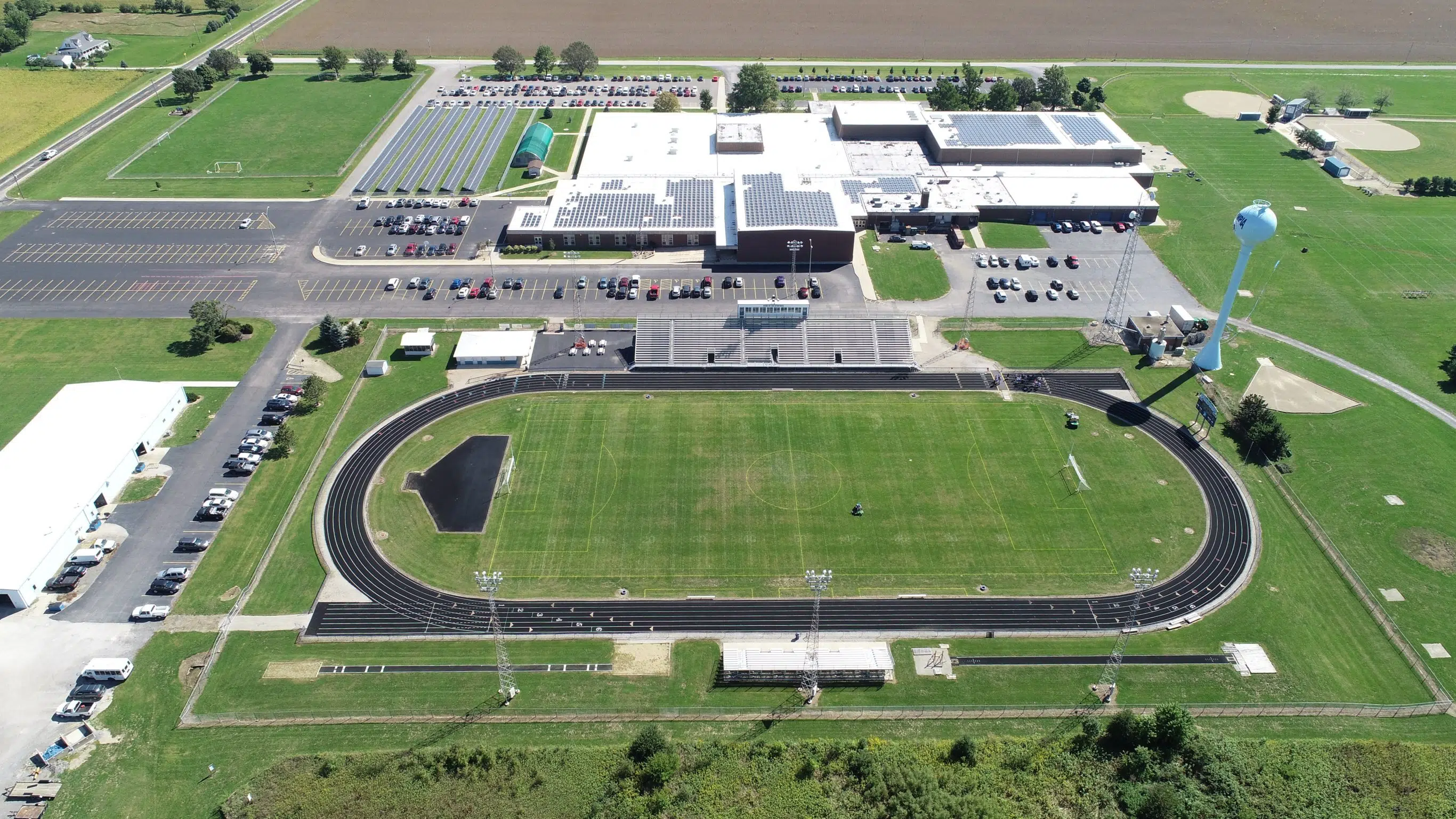“Fires caused by PV (solar) rooftop systems are very uncommon.” “That’s according to the Energy Efficiency & Renewable Energy Solar Energy Technologies Office . Design flaws, component defects, and faulty installation generally cause solar rooftop fires,” says the office. “The National Electrical Code has established safety standards to address these concerns.”
Concerning the Olympia fire, Eric Fulk, Fire Chief for the Mt. Hope – Funks Grove Fire Protection District, said, “Right now, the cause of the fire is still under investigation and for that reason, there is not a lot I can speak on regarding that. What I can say is that the solar equipment is involved in the ignition.”
As a result of the increase in installations throughout the fire district the department has had training on PV systems. In fact they did a walk-thru on the entire system at Olympia.
“Through education, training, pre-planning and a relationship with the property owners and installers, PV systems and our firefighters will be more prepared when an incident occurs,” said Fulk. “Just like anything else on rooftops, they do pose a danger to firefighting operations. Electrical shock, slips and falls, roof collapse and gases from burning panels are to name a few.”
Solar Power World echoed the Solar Energy Technology Office when it said in a 2020 story, “Solar PV fire incidents are extremely rare. Previous industry reports acknowledge fewer than 1 incident per 10,000 installations.”
Still, there have been a number of reports over the past several years of solar fires on rooftops. Most well known are a spate of fires experienced by Walmart.
Walmart experienced such fires in:
- 2012
- 2016
- 2017
- March 2018 in Beaver Creek, Ohio
- May 2018 in Indigo, California
- May 2018 in Denton, Maryland
- November 2018 in Yuba City, California (after taking offline)
- May 2021 in Macomb, Illinois
- April 2022 in Decatur, Illinois
According to a 2019 ArsTechnica story, after seven rooftop solar fires Walmart sued Tesla (Solar City) accusing them of “widespread systemic negligence.”
“Walmart had previously suffered fires at stores with SolarCity installations in 2012, 2016, and 2017, but the company had written these off as isolated accidents, said ArsTechnica. “But a string of three fires in as many months was hard to ignore.”
“So Walmart asked Tesla to deactivate all of its Walmart solar panels pending an investigation”, said ArsTechnica. “Even after this was done, Walmart suffered another fire at a store with Tesla solar panels—this one at a Yuba City, California store in November 2018.”
According to the Solar Power World story, ” it was no coincidence that Walmart experienced fires at a rate of nearly 300-times the average — it is because the same contractor (SolarCity/Tesla) performed the install at each store.”
After publication of the original ArsTechnica story it was updated within days that Tesla was “working with Walmart to resolve the dispute.”
According to a 2019 story in the The Verge Walmart dropped its lawsuit.
As noted above since that time Illinois has experienced two such Walmart solar rooftop fires with one in 2021 and the other in 2022.
Not only that but according to CNBC as recently as September 2022 Amazon took all of their rooftop solar systems off line.
A 2021 story in Pv Magazine said, “… due to inconsistent installation practices, intense manufacturer competition, and sometimes-conflicting motives between operations and maintenance (O&M) providers and end-owners, the risk of fires on rooftop installations is uncomfortably common.
Based on a sample of hundreds of commercial scale rooftop inspections performed by Clean Energy Associates (CEA) globally, more than 90% of inspected rooftops had significant safety and fire risks,” said Pv Magazine.
Pv frankly admitted, “One need only perform a simple Google search to find examples of these risks turning into actual fires and causing costly damage, business disruptions, store closures, data center interruptions, and so on.”
Those who have solar rooftop systems or are planning to install them may wish to reach out to a source that will help improve the systems level of safety.
“We encourage all property owners to include us during installation and after so that we can learn about their specific system so we can be as safe as possible,” said Fulk.






